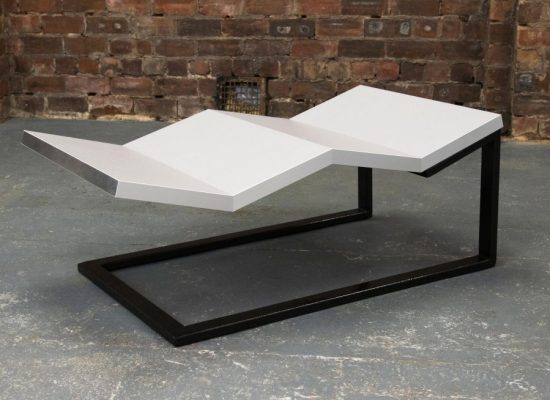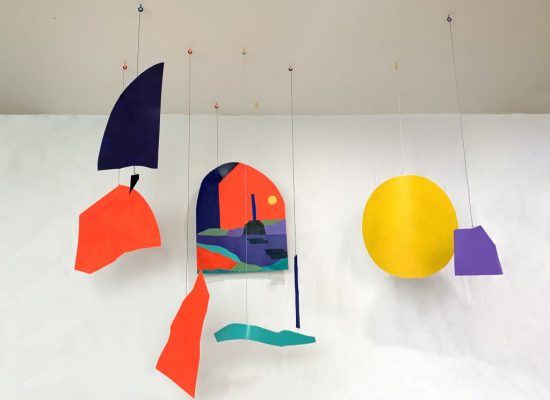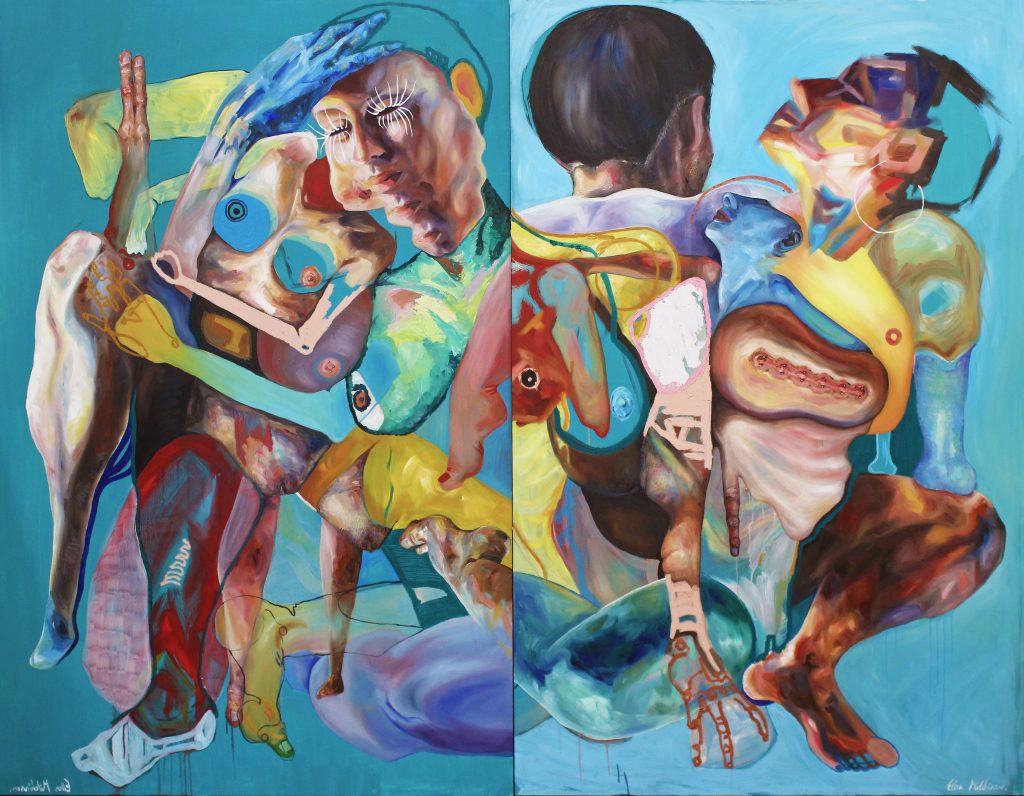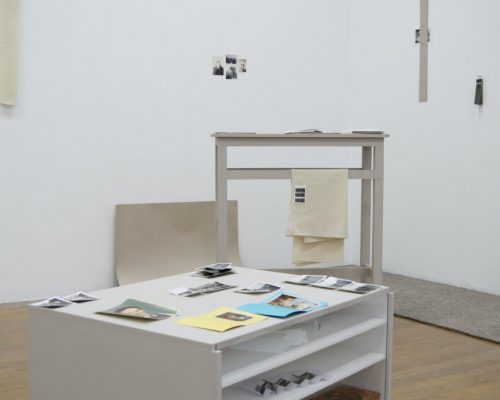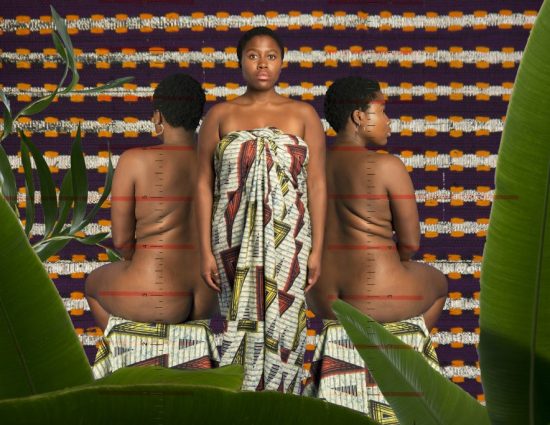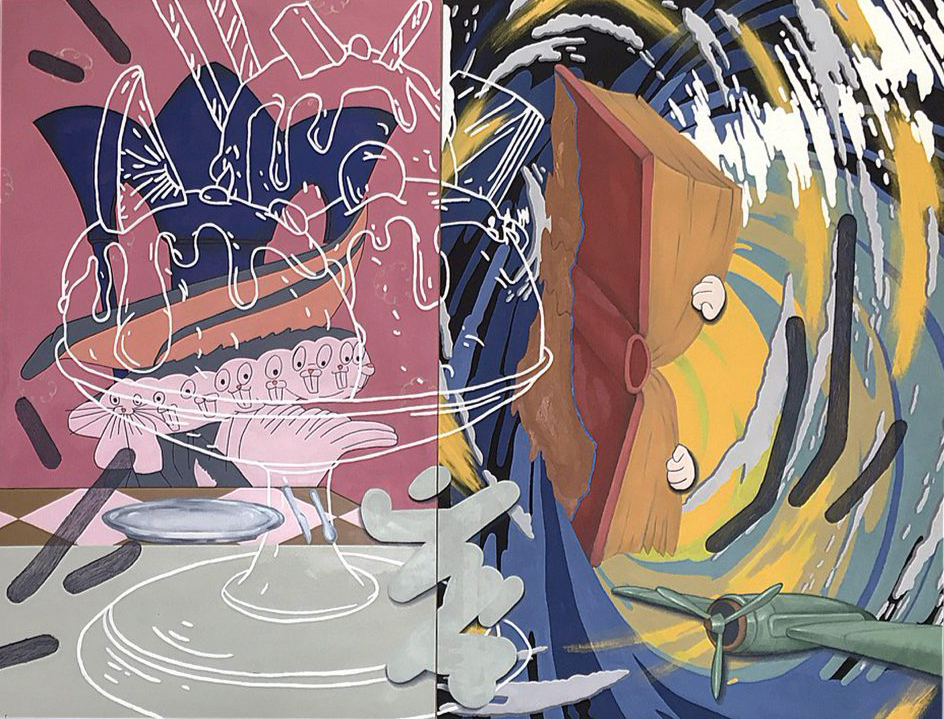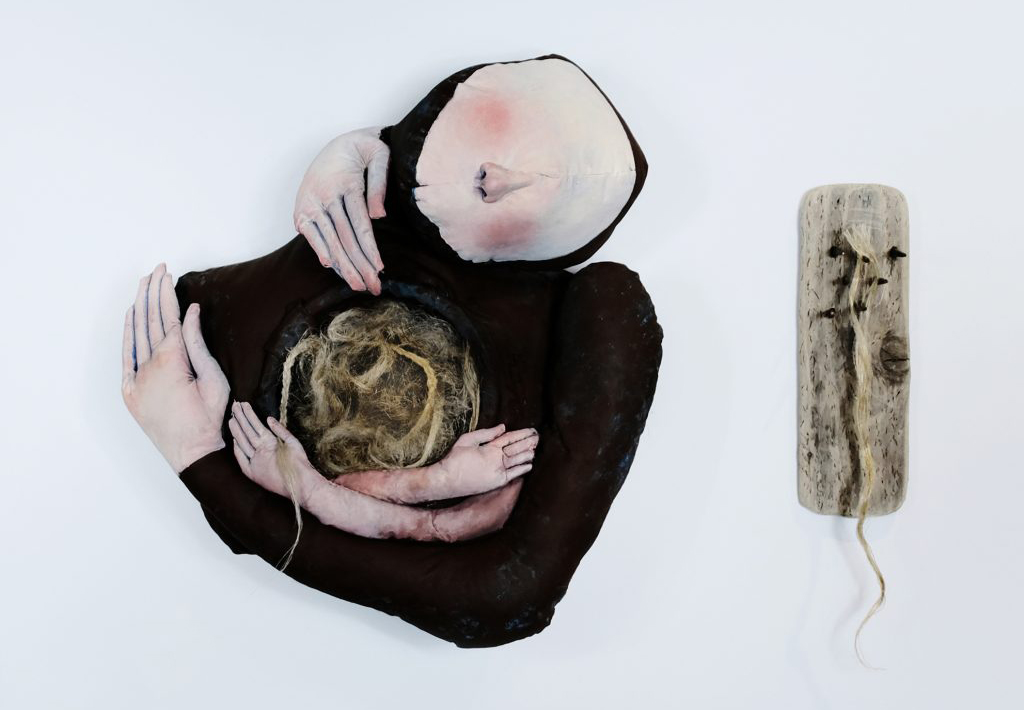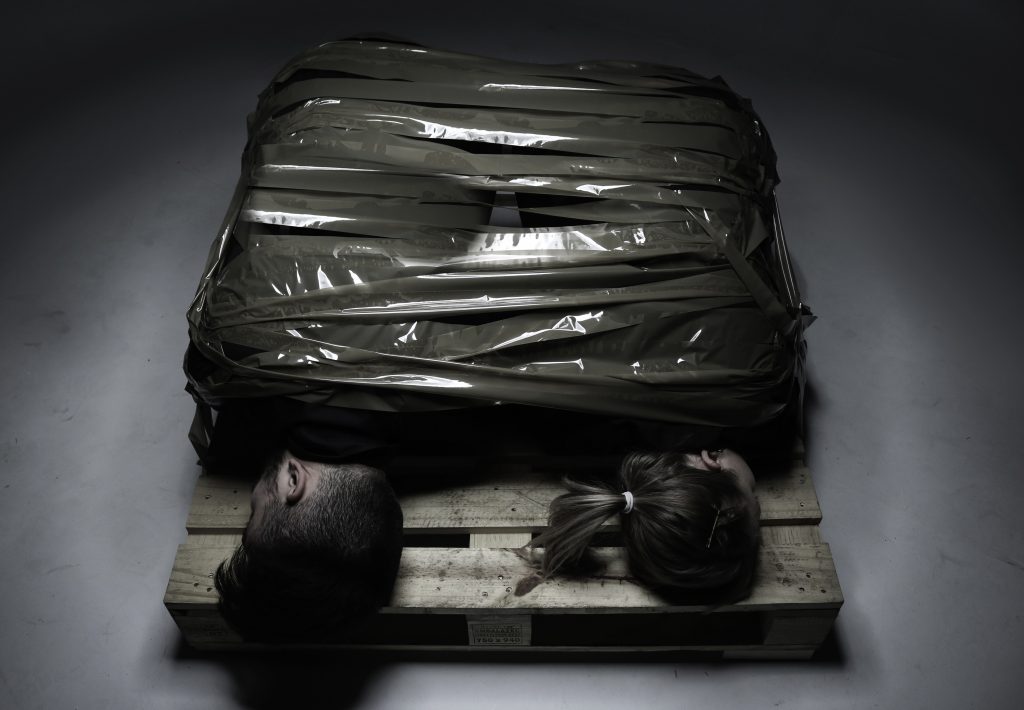NEW GRADUATE AWARD
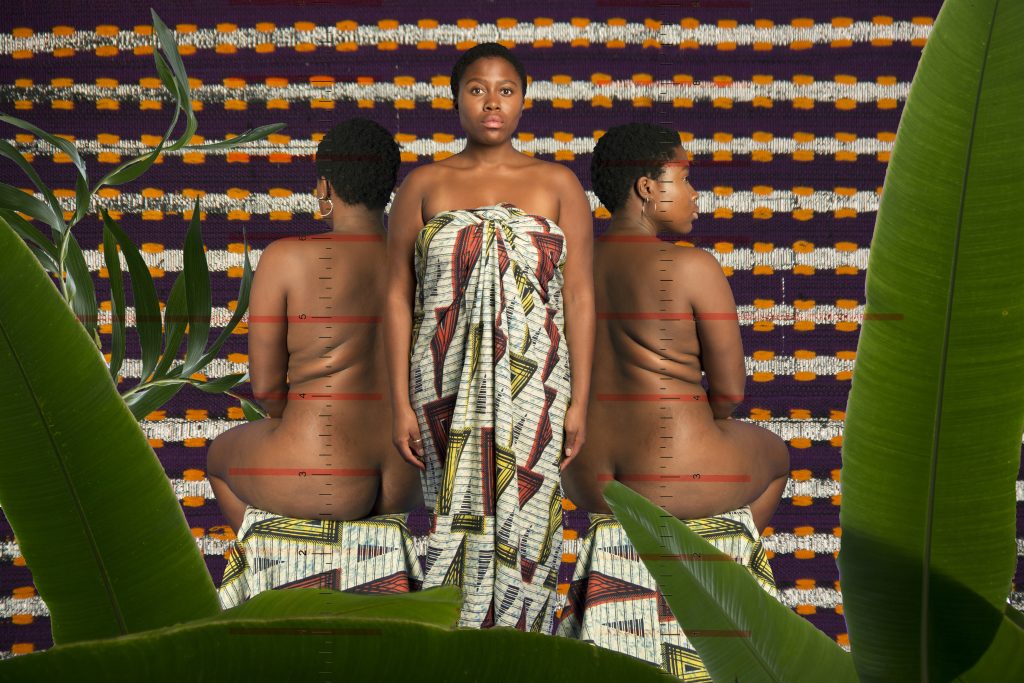
We are delighted to announce this year’s winners of the SSA New Graduate Award!
As is our tradition, established in the early 1970s, members of the SSA Council visit the degree shows each year to select the best work for inclusion in the Society’s Annual Exhibition. This year, albeit virtually, we have really enjoyed visiting each show and seeing the extremely high standard of work. We are really looking forward to working with all the selected graduates at next year’s Annual Exhibition.
GLASGOW SCHOOL OF ART
DYLAN ESPOSITO
“The world can be a dizzying, confusing, uncertain and overwhelming place. Architecture and design attempt to offer order and control through their reassuring visions of how life could be. I am interested in the ambiguity of buildings and objects that do not quite meet their intended aspirations, are deemed unfit for purpose, outdated or are left to ruin. Through sculpture, I appropriate these architectural, domestic and design failures, reworking them as a metaphor of the disparity between preconceived expectations and their shortcomings. Using everyday building processes, I often submerge and disguise found objects and materials in an attempt to conceal their failures, examining the fine line between the ideal and the uncanny. My work directly references my experience as someone who identifies as being on the autism spectrum, attempting to mask my differences & striving for predictability in a neurotypical world.”
Image: Dylan Esposito, Kitchen Cantilever, 2020, formica, Steel, Paint, Wax, 113 x 63 x 45cm
JIYOUNG KIM
“My practice has been deeply inspired by theatrical images and the moments captured on a stage and auditorium. A linear story gradually changes through dispersion and concentration. The reinterpreted shapes, emotions and stories compose a space which invites the audience and continues to create new narratives with them.
Each piece of work reacts to the movement of the one in the space. It visualises the invisible evidence of one’s existence. As everyone moves differently, the work reacts in different ways. Through this spatial experience, it enables the audience to be aware of their movement and how influential they are to the consequences of the situation.”
Image: Jiyoung Kim, Stage: One to Million, 2020, acrylic on acetate film, dimensions variable
DUNCAN OF JORDANSTONE COLLEGE OF ART & DESIGN
ELLEN MITCHINSON
The human body has an infinite mutability. Prominent in evolution, this allows the body to become a construct of an object with its ability to reform.
Mitchinson pays homage to the inaccurate ideals of females within art and offers entities that are messy, and modified, to find pleasure in both familiarity and abnormality.
Mitchinson’s work creates the illusion of a fragmented human body strung together as a united front. Using physical methods of distortion surrounding models, bodies became objects of pattern, shape and line, a non-human replica with misinterpretation often attached. Working with a variety of styles on a large scale, Mitchinson uses oil paint to recreate sectional representations that were evident in the nature of works created by male artists, as a reclamation of the female figure in art. Married with the distortion to the figure, exploring familiarity and discomfort, one organism made up of many is now a vague notion of a whole human body. The changeability of the bodies within the works layers explores a chosen censorship between what is seen and what is hidden.
Image: Ellen Mitchinson, Fourteen Fingers, Five Vaginas and Eleven Legs, 2020, oil paint on board, 244 x 190 cm
HEATHER TAYLOR
In the space of the studio/page/exhibition I arrange and rearrange. Observing. Recording. Accumulating a body of imagery, writings, objects, film and sounds. This work is informed by being an observer of daily domestic life.
Balance
Rhythm
Repetition
Holding hands with my grandmother.
A photograph placed into a frame.
Clean white washing hanging out to dry.
The significance of contact, of hands, of remembering and of
being reminded.
I am collating an archive. Gathering photos and stories so
dense with memories. Yet, informed by the projection of my
thoughts. Bound so tightly to my life.
These fragments are continuously added to, moved, separated
or hidden. The collection is put through a rigorous editing process,
led by instinct and driven by unknowns. Shards of thinking being
sewn back together by whispers of unheard conversations.
Image: Heather Taylor, Held / Fragmented, 2020, mixed media
EDINBURGH COLLEGE OF ART
TAYO ADEKUNLE
Tayo Adekunle is a Nigerian British photographer based in Edinburgh. Working a lot with self-portraiture, she uses her work to explore issues surrounding race, gender and sexuality as well as racial and colonial history. Her work is centred around reworkings of historical tropes relating to the black female body, taking from contexts that include art historical paintings and sculptures, as well as 19th century colonial photography. By placing historical imagery in a contemporary context, the relationship between the treatment of the black female body in the past and its treatment in the present day is explored.
Image: Tayo Adekunle, Reclamation of the Exposition #03, 2020, digital photograph
JACK WHITELOCK
“My practice is concerned with the dialogues formed between readymade/appropriated images and an abstract language of painterly/digital aesthetics.
Taking pre-existing imagery and changing its context through paint is a goal in my practice. But also the initial formal and compositional response being something I am driven by, such as the aesthetic relationships of colours, shapes, compositions, surface, line and gestures. Therefore, it’s the accumulation of various sources of imageries that interests me and not necessarily the images just on their own. Whether this might be the swirling movement of a cartoon smear, against the swirling linier marks of the drawing of an ice cream. Or simply the contrast of a bright orange sky against a deep blue, flat plain. I feel it’s important to have a strong initial impact, which then allows more to be discovered the longer you observe.
Themes vary and evolve depending on the subject matter. I’m more interested in how one thing may shape another through the combination of signifiers. Shown through the placement of certain characters, landscapes, objects, images, materiality and formal elements. These themes often come about after the work is made, and follows a process of collaging different sourced images, creating both contextual and aesthetic dialogues. The images act as a starting point, with painting and collage constantly revolving around each other.”
Image: Jack Whitelock, Swirl with Book, 2020, oil and acrylic on canvas, 190 x 250 cm
GRAY’S SCHOOL OF ART
ALICJA RODZIK
“My works represent a journey through time, an inward journey – back and forth from one ancestral memory to another stretching from the present and touching a rich and heavy history.
Histories are evocative, a tangle of hopes, images and struggles, they can be confusing for us too, our dreams and lost longings.
I freely combine textiles, sculpture, drawing and photography in my works, merging both found and personal stories, which become part of this peculiar game between life and death.
Endlessly fascinated by abandoned objects, my hope is to breathe new life into them by channelling instinct, empathy and new forms of expression, engaging the observer and fostering dialogue.”
Image: Alicja Rodzik, Comb Me Not, mixed media, dimensions variable
SOPHIE STEWART
Through the use of mixed media, Stewart challenges the acceptance of constraints caused by modern working conditions, and highlights the effects of precarity on the individual. She questions dehumanising aspects of precarious work, by emphasising the mundane, prolonging repetitive routines, and drawing attention to societal labels and expectations.
The aim of her practice is to eradicate feelings of alienation, by ‘re-humanising’ the worker – giving a voice to marginalised people, sharing their stories and experiences, and expressing the toll of emotional labour on an individual’s self-worth.
Image: Sophie Stewart, Prepacked I, digital photograph mounted on dibond, 59 x 84 cm
University of the Highlands and Islands
UHI have decided to split their degree shows, so we have postponed our selection until we can view all the graduates’ work in December.
The SSA is committed to supporting recent graduates.
Join here

